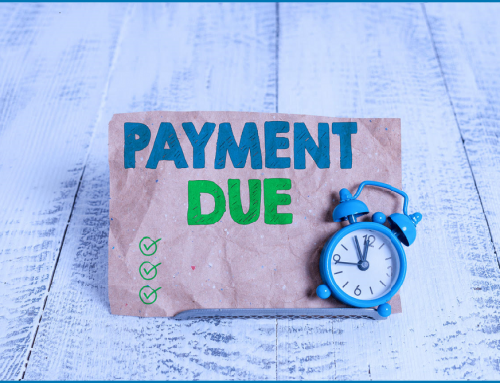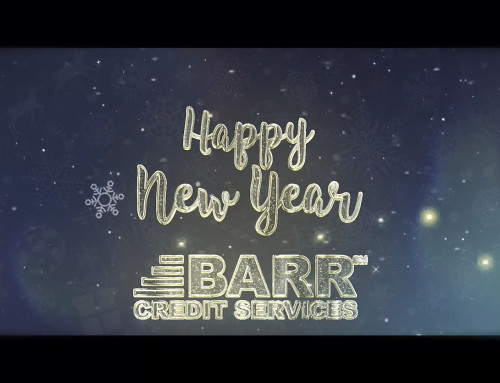
Why You Need an Effective Collection Policy
If you’re a business owner, or an employee in your company’s credit department, you already know how difficult debt collection can be. But did you know that poor debt collection is often one of the main reasons businesses fail? Since cash flow is the lifeblood of any business, an effective collection policy is essential to keeping the money rolling in.
Since all businesses run into payment problems from time to time, it’s best to be prepared. This means having a formal and documented collection policy in place which is followed by all members of your organization. Dealing with collection issues on an ad hoc basis taxes the team and reduces cash flow opportunity. Your results will be inconsistent at best, and inconsistency can lead to large overdue accounts that build up overtime.
But developing an effective collection policy early on can help you mitigate a host of collection headaches. And maintaining a solid companywide collection policy will enable you to spot problems before they become too big–or even before they occur.
When creating a successful collection policy, it’s important to identify the stage of debt collection for each past-due account.
The Stages of Collections
Within the collections process, there are basically four stages of delinquency, each of which requires a different tactic. Let’s take a look at an effective process for dealing with each stage.
Stage One: 1-30 Days Overdue
Accounts at the earliest stage of delinquency must be managed with a focus on customer satisfaction and payment education. Starting with soft collection tactics increases the chances of being paid quickly, without alienating your customer and driving away future business.
At this stage, when the debt is between one and 30 days overdue, the late payment may well be an accounting oversight or small cash-flow problem on the customer’s part. Keeping the lines of communication open by offering “friendly reminders” increases the odds that you’ll receive your money.
This stage of collection does not typically require the aid of a debt collection service. But if you do hire one at this point, make sure the company approaches your customer with friendly calls, emails and letters, gently reminding him or her of the debt. You may also offer a payment arrangement. This is all managed as an extension of your internal department.
Stage Two: 31-60 Days Overdue
When 31 to 60 days have passed, you’ll need to step up your efforts. Emails, letters and phone calls should continue, but they may be a bit more direct while still friendly in tone. It may also be time to mention reports to credit bureaus, and begin tacking on late-payment fees.
Also, make sure customers at this stage know when their delinquency will trigger the transfer of their accounts to collections, and offer an opportunity to work with them before it gets to that point. Depending on the resources in your credit department, this may also be the time to partner with a debt collection firm.
Stage Three: 61-90 Days Overdue
At Stage Three, phone calls, emails, and letters typically increase in frequency and may include threats of legal action. This is also when you may wish to place a hold on the customer’s credit. Also, inform the debtor that a negative report is being sent to credit bureaus, and that fees and interest are accruing.
Stage Four: More Than 90 Days Overdue
After 90 days, most businesses enlist the services of a debt collection firm (if they haven’t already). This is the most serious of the four debt collection stages, when you definitely need to bring in the “big guns” in order to get those invoices paid.
When choosing a third-party collection service, be sure to select one that moves properly through the various stages of collection (beginning with friendly reminders and gradually increasing to firmer tactics). Your customers will feel respected, you’ll have a better chance of collecting monies owed to you. You’re more likely to retain those customers who had a temporary cash flow problem.
Dispute Resolution
Disputes can arise at any point in the various stages of debt collection. But savvy business owners will have a dispute resolution process established to handle such matters.
This process will differ, however, depending on the type of dispute. For instance, billing disputes should be treated differently from technical disputes. But for each dispute type, it’s wise to have specific staff members designated to handle them. (For example, a dispute related to a billing error could be solved by the sales administration, whereas a technical dispute could be addressed by the sales manager or technician.)
Other types of disputes could include:
- Quality dispute regarding the quality of goods or services performed.
- Price dispute, if there’s a differential between the price charged and the one negotiated by the customer.
- Administrative dispute, such as missing or poorly written invoices, purchase orders, etc.
- Missing goods dispute, where there’s a difference between what was billed and what was actually delivered.
For each type of dispute, it’s important to establish a timeline for resolution. For example, a simple price dispute could probably be resolved within a few days, while a quality issue may be more complicated and take several months to settle. Make sure that all parties are aware of the established time line.
During the dispute resolution process, debt collection activities are temporarily halted (per the Fair Debt Collection Practices Act). Once the dispute is resolved, normal collection will resume, with a new due date based on the date of resolution.
Sources:






